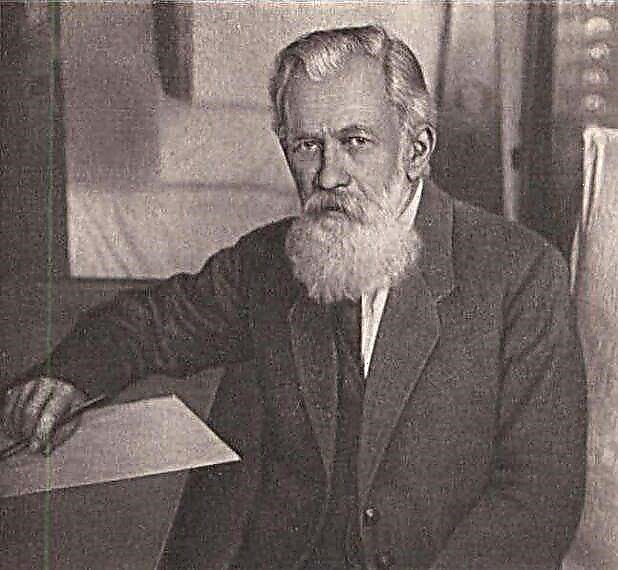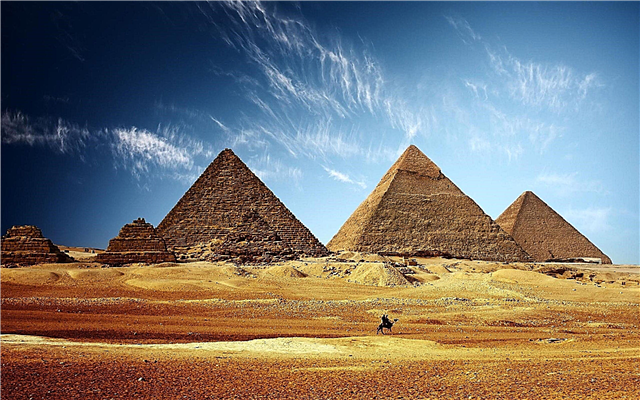Few major incidents can boast that more than 100 versions have been created to explain them. Even in the case of the most intricate mysteries, the matter usually comes down to a choice of several explanations for what happened. Riddles remain mysteries only because of the lack of evidence - there is nothing to confirm the speculative version.

But the lack of evidence also has a downside. If we cannot confirm some version, then it is unlikely that we will be able to refute others. The limited evidence allows us to put forward the most exotic versions in full accordance with the Eastern proverb, which says that one fool can ask so many questions that a thousand wise men cannot answer them.
In the case of the Tunguska meteorite, the questions begin with the name - perhaps it was not a meteorite either. It is just that this name became generally accepted due to the initial hypothesis. We tried to call it “Tunguska Phenomenon” - it didn't catch on, it sounds too blurry. "Tunguska catastrophe" - no one died. Just think, a few square kilometers of forest have fallen, so there is enough of it in the taiga for millions of such phenomena. And the phenomenon did not become "Tunguska" right away, before that it had two more names. And this is just the beginning ...
Scientists, so as not to lose face, speak of significant results, which, allegedly, were achieved by numerous expeditions that plowed the taiga in search of truth. It was found that trees in the disaster zone grow better, and the soil and plants contain a variety of substances, including rare minerals. The radiation level is almost not exceeded, but a magnetic anomaly is observed, the reasons for which are unclear and continue in the same spirit. There are hundreds of scientific works, and the volume of the results obtained cannot be called anything other than deplorable.

1. 1908 was generally rich in all sorts of curious natural phenomena. A giant flying object shaped like the letter “V” was observed on the territory of Belarus. The Northern Lights were visible on the Volga in summer. In Switzerland, a lot of snow fell in May, and then there was a powerful flood.
2. It is only reliably known that at about 7 am on June 30, 1908 in Siberia, in a sparsely populated area in the basin of the Podkamennaya Tunguska river, something exploded very violently. There is no proven evidence of what exactly exploded.

3. The explosion was very powerful - it was "felt" by seismographs around the world. The blast wave had enough power to circumnavigate the globe twice. The night from June 30 to June 1 did not come in the Northern Hemisphere - the sky was so bright that you could read. The atmosphere became slightly cloudy, but this was noticed only with the help of instruments. There was no effect observed in volcanic eruptions, when dust hung in the atmosphere for months. The power of the explosion was from 10 to 50 megatons in TNT equivalent, which is comparable to the power of the hydrogen bomb detonated in 1959 on Novaya Zemlya and nicknamed “Kuz'kina's mother”.
4. A forest was felled at the site of the explosion within a radius of about 30 km (moreover, at the epicenter, the trees survived, only they lost branches and leaves). The fire started, but it did not become catastrophic, although it was the height of summer - the soil in the area of the disaster was very waterlogged.

Fallen forest

The forest is at the epicenter of the explosion. It is also called "telegraphic"
5. The Evenks living nearby were frightened by the heavenly phenomenon, some were knocked down. Doors were knocked out, fences were knocked down, etc. Glasses flew out even in remote settlements. However, there were no casualties or major destruction.
6. In the books dedicated to the event in the basin of the Podkamennaya Tunguska one can often find references to numerous spectators of the “meteorite fall”, etc. These spectators could not be numerous in any way - very few people live in those places. Yes, and interviewed witnesses several years after the incident. Most likely, the researchers, in order to establish relations with the locals, gave them some gifts, treated them, etc. So dozens of new witnesses appeared. The director of the Irkutsk observatory, A.V. Voznesensky, distributed a special questionnaire, which was filled in by dozens of representatives of the educated stratum of society. In the questionnaires only thunder and shaking of the soil are mentioned, the flight of a celestial body was not seen by the respondents. When the collected testimony was analyzed in the 1950s by the Leningrad researcher N. Sytinskaya, it turned out that the testimony about the trajectory of a celestial body differed exactly the opposite, and they were divided equally.

Explorers with Evenks
7. In the first newspaper report about the Tunguska meteorite it was said that it crashed into the ground, and only its upper part with a volume of about 60 m3 sticks out on the surface3 ... Journalist A. Adrianov wrote that the passengers of the passing train ran to look at the heavenly guest, but could not approach him - the meteorite was very hot. This is how journalists enter history. Adrianov wrote that the meteorite fell in the Filimonovo junction area (here he did not lie), and at first the meteorite was called Filimonovo. The epicenter of the disaster is located about 650 km from Filimonovo. This is the distance from Moscow to St. Petersburg.
8. Geologist Vladimir Obruchev was the first scientist to see the disaster area. The professor of the Moscow Mining Academy was in Siberia on an expedition. Obruchev interviewed the Evenks, found a fallen forest and sketched a schematic map of the area. In Obruchev's version, the meteorite was Khatanga - Podkamennaya Tunguska closer to the source is called Khatanga.

Vladimir Obruchev
9. Voznesensky, who for some reason concealed the evidence he had collected for 17 years, only in 1925 reported that the celestial body flew almost exactly from south to north with a slight - about 15 ° - deviation to the west. This direction is confirmed by further research, although it is still disputed by some researchers.
10. The first purposeful expedition to the place of the meteorite fall (as it was then believed) went in 1927. Of the scientists, only Leonid Kulik, a mineralogist, took part in it, who convinced the USSR Academy of Sciences to finance the expedition. Kulik was sure that he was going to the point of impact of a large meteorite, so the research was limited only to finding this point. The scientist with great difficulty penetrated the area of the fallen trees and found that the trees fell radially. This was practically the only result of the expedition. Returning to Leningrad, Kulik wrote that he had found many small craters. Apparently, he began to assume that the meteorite collapsed into fragments. Empirically, the scientist estimated the mass of the meteorite at 130 tons.

Leonid Kulik
11. Leonid Kulik several times led expeditions to Siberia, hoping to find a meteorite. His search, distinguished by incredible tenacity, was interrupted by the Great Patriotic War. Kulik was captured and died of typhus in 1942. His main merit was the popularization of the studies of the Tunguska meteorite. For example, when they announced the recruitment of three workers for the expedition, hundreds of people responded to the announcement.
12. The most powerful post-war impetus to the research of the Tunguska meteorite was given by Alexander Kazantsev. The science fiction writer in the story "Explosion", which was published in the magazine "Around the world" in 1946, suggested that a Martian spacecraft exploded in Siberia. The space travelers' nuclear engine exploded at an altitude of 5 to 7 km, so the trees at the epicenter survived, although they were damaged. Scientists tried to make Kazantsev a real obstruction. He was reviled in the press, academicians appeared at his lectures, trying to refute the hypothesis, but for Kazantsev everything looked very logical. Emboldened, he departed from the concept of fantastic fiction and acted as if “everything was so” in reality. The creak of the teeth of venerable members of correspondents and academicians spread throughout the Soviet Union, but in the end they were forced to admit that the writer did a lot to continue his research. Thousands of people all over the world got carried away with the solution to the Tunguska phenomenon (Kazantsev's idea was presented even in the largest American newspapers).

Alexander Kazantsev had to listen to many unflattering words from scientists
13. At the end of the 1950s in Tomsk, on a voluntary basis, the Complex Independent Expedition (KSE) was formed. Its participants, mainly students and university professors, undertook a number of expeditions to the site of the Tunguska disaster. There were no breakthroughs in the investigation. A slight excess of the radiation background was found in the ashes of the trees, but the study of thousands of bodies of the deceased and the histories of diseases of local residents did not confirm the "nuclear" hypothesis. In the description of the results of some expeditions, there are characteristic passages like “are natural formations”, “the influence of the Tunguska catastrophe is not traced” or “a map of trees was made”.

Participants of one of the CSE expeditions
14. It got to the point that the researchers, having learned about the pre-revolutionary campaigns in the area of the disaster, began to look for and interview (after half a century!) The surviving participants and their relatives. Again, nothing was confirmed, and the discovery of a pair of photographs taken at the beginning of the century was considered good luck. The researchers received the following data: something fell from the sky in 1917, 1920 or 1914; it was in the evening, at night, in winter, or at the end of August. And immediately after the heavenly sign, the second Russian-Japanese war began.
15. A major expedition took place in 1961. It was attended by 78 people. They found nothing again. “The expedition made a great contribution to the study of the area of the fall of the Tunguska meteorite,” read one of the conclusions.
16. The most sound hypothesis for today is that a celestial body, consisting mainly of ice, flew into the Earth's atmosphere at a very acute (about 5 - 7 °) angle. Having reached the site of the explosion, it exploded due to heating and increasing pressure. The light radiation set the forest on fire, the ballistic wave knocked down the trees, and the solid particles continued to fly and could fly away very far. It is worth repeating - this is simply the least controversial hypothesis.
17. Kazantsev's nuclear theory is far from the most extravagant. It was hypothesized that in the area of the catastrophe there was an explosion of a huge mass of methane released from the earth's strata. Such incidents have occurred on Earth.
18. Within the various variations of the so-called. For the “comet” version (ice + solid), the estimated mass of the exploded comet ranges from 1 to 200 million tons. This is about 100,000 times smaller than the well-known Halley comet. If we talk about the diameter, the Tunguska comet could be 50 times smaller than Halley's comet.
19. There is also a hypothesis according to which a snowball of low density flew into the Earth's atmosphere. When braking on the air, it collapsed explosively. The explosion acquired enormous power when converting nitric oxide into nitrogen dioxide (those who have seen the films of the Fast and the Furious franchise will understand), this also explains the glow of the atmosphere.
20. Not a single chemical analysis revealed anomalous content of any of their chemical elements in the disaster zone. As an illustration: in one of the expeditions, 1280 analyzes of soil, water and plant material were taken in the hope of obtaining information on the concentration of 30 "suspicious" substances. Everything turned out to be within the normal or natural concentration, their excess was insignificant.
21. Various expeditions discovered magnetite balls, testifying to the extraterrestrial origin of the Tunguska celestial body. However, such balls are found everywhere - they only indicate the number of micrometeorites falling to the ground. The idea was strongly discredited by the fact that the samples taken by Leonid Kulik were heavily contaminated in the storage of meteorites of the USSR Academy of Sciences.
22. Scientific expeditions have succeeded in determining the coordinates of the explosion site. Now there are at least 6 of them, and the difference is up to 1 ° in latitude and longitude. On the earth's surface, these are kilometers - the diameter of the cone from the point of explosion in the air to the base on the earth's surface is very extensive.
23. The epicenter of the Tunguska explosion almost coincides with the eruption of an ancient volcano that went extinct more than 200 million years ago. The traces of the eruptions of this volcano complicate the mineralogical situation on the ground and at the same time provide food for a wide variety of hypotheses - during the eruption of volcanoes, very exotic substances fall on the surface.
24. Trees in the explosion zone grew 2.5 - 3 times faster than their counterparts in the untouched taiga. A city dweller will immediately suspect that something was wrong, but the Evenks suggested a natural explanation to the researchers - they put ash under the trunks, and this natural fertilization accelerated the growth of the forest. Extracts from Tunguska trees, introduced for sowing wheat in the European part of Russia, increased yields (numerical indicators in the reports of scientists are prudently omitted).
25. Perhaps the most important fact about the incident in the Tunguska basin. Europe is very lucky. Fly that which exploded in the air for another 4 - 5 hours, and the explosion would have taken place in the St. Petersburg area. If the shock wave fell trees deep into the ground, then the houses would certainly not be good. And next to St. Petersburg there are densely populated regions of Russia and no less populated territories of Finland and Sweden. If we add to this the inevitable tsunami, the frost runs over the skin - millions of people would suffer. On the map, it seems that the trajectory would go to the east, but this is due to the fact that the map is a projection of the earth's surface and distorts directions and distances.









